1
HOME > Tips & Advice >
HOW TO SHOP FOR YOUR FIRST SUIT
Written by Ivan Yaskey in Tips & Advice on the 19th July 2023
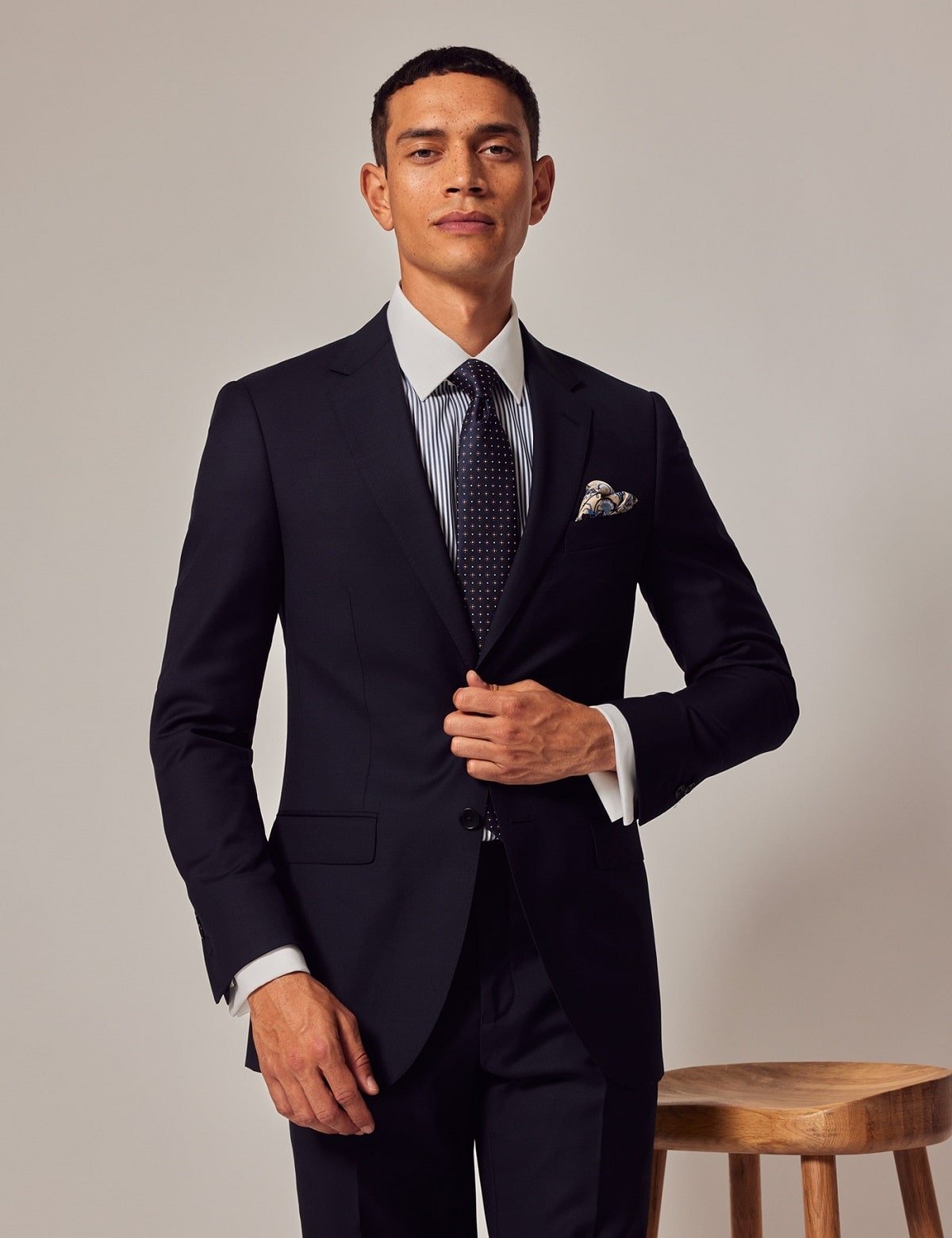
Although our dress codes have evolved significantly over the past 20 years, the suit continues to represent an entry-point to adulthood. Perhaps you graduated university and are starting your first career-related position – or are at least doing rounds of interviews. Or, you received a promotion with more responsibilities that now requires you to dress better. Although a blazer and chinos or a dressier trouser often suffice in these situations, your first suiting purchase needs to count – in terms of quality, versatility, and longevity. Here’s how you can get started:
Think About Why You’re Purchasing a Suit
Don’t treat your first suit like a class ring – an insignificant, clunky piece of jewellery simultaneously representing the end one chapter and the start of something new. It’s not a formality or a symbol. Instead, base your decision to purchase your first suit on:
- When you’ll be wearing it: If this is a job-interview suit, be sure you can sport it for occasions like work presentations and weddings. Also look to split it up for less formal settings and purposes. Similarly, avoid a one-off wedding suit, and seek out a design that gives you more mileage.
- Where you will be wearing it: More frequent usage deserves a three-season, lined design that keeps you fairly comfortable and won’t look or feel awkward. Avoid purchasing a summer suit – unlined cotton or linen – for your first go-around, as well as something you could only wear to a party or event with a cocktail dress code.
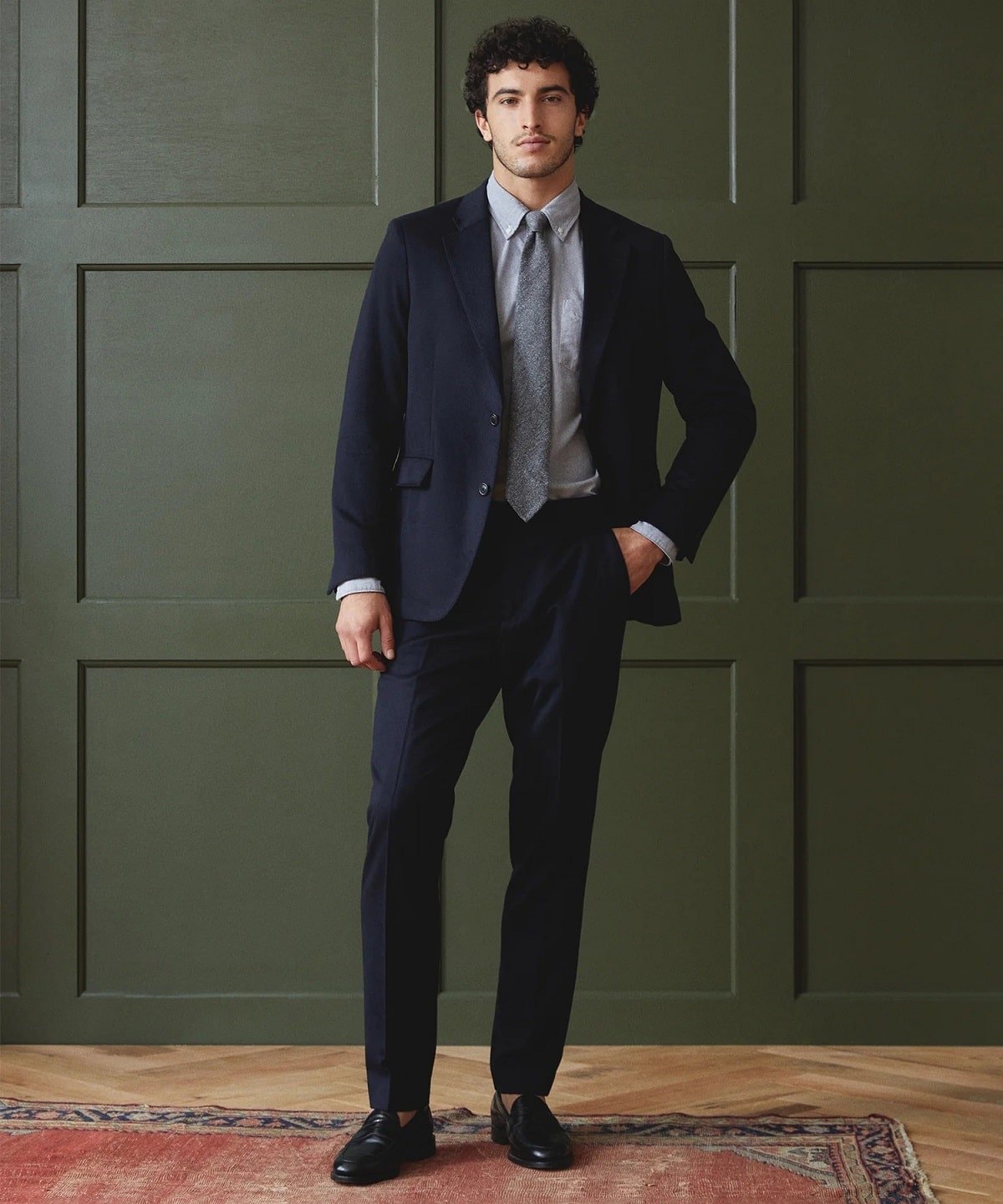
Start With Materials
You’ve likely already worn a suit before – although your parents may have purchased it off the rack when you were a child or teen, or you rented it. Longevity and quality, in this case, come down to the material making up your suit:
- Wool: This is the acceptable, high-quality baseline. Worsted wool is your standard, although tweed adds a heritage look and texture. As a material, wool does it all – keeps you relatively warm, controls perspiration, and manages odours.
- Cotton: Cotton is a budget yet still natural fabric for three-season wear and a suitable warm-weather material when unlined. Cotton is serviceable as long as you maintain your suit.
- Linen: Linen tends to be reserved for warm-weather suits, although lined versions provide enough coverage for spring and fall weather. In all contexts, linen has a looser, more open weave that lets air pass through and lends itself to more texture.
- Synthetics and blends: You spot these among fast-fashion suits – particularly polyester, although you may find rayon, nylon, or a spandex blend crafted for flexibility. In all cases, the suit looks acceptable at a glance, but the fabric pills or stretches out relatively quickly. In general, avoid synthetics when making a long-term purchase.
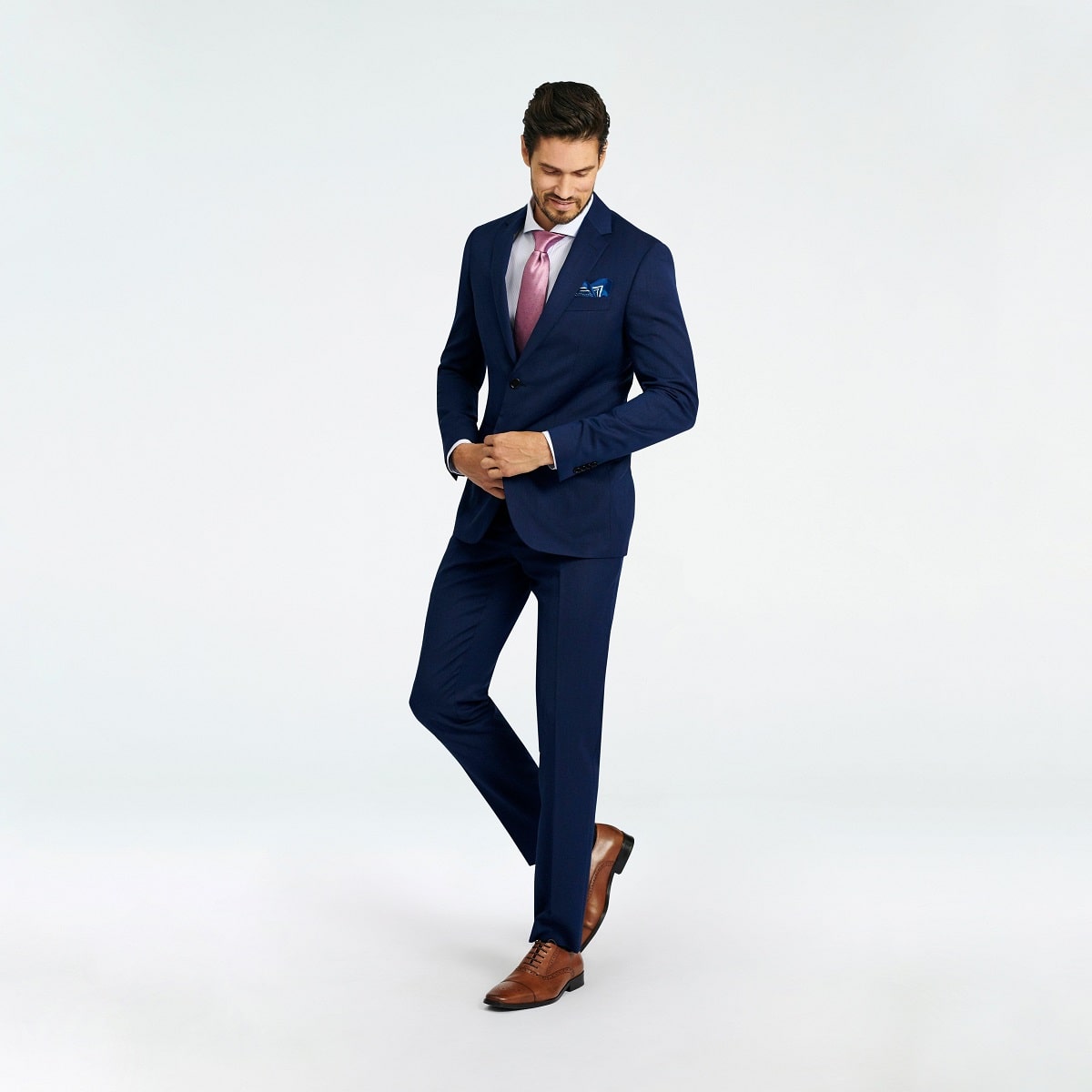
Know Your Colours and Patterns
Start classic before you experiment. With suiting, this approach begins with a navy, charcoal, or grey shade. Avoid second-level colours – forest green, blue, brown, tan, or burgundy – for now, and see bold shades and patterns as something you save for festive and more casual occasions. As well, black without any texture or embossing is a funeral colour and appears too somber for the typical workplace or weddings.
Why navy, grey, or charcoal?
- These colours tend to match a broader range of dress shirts – think blue, white, or light checks or stripes – and accessories like pocket squares and cufflinks.
- If you’re in the mood to experiment, these three shades serve as a neutral backdrop for pops of a brighter colour, like red or purple, or a pattern. This is the first stage for trying out various prints and patterns.
- They’re considered the most professional colours, no matter where you work or your occupation, and also the most versatile, including if you primarily wear your suit as separates.
- Lighter colours signal a warm-weather suit – and look out of place when you’ve got to look put together for a presentation in January.
- They additionally match typical dress shoe colours: However, avoid pairing black dress shoes with a navy suit.
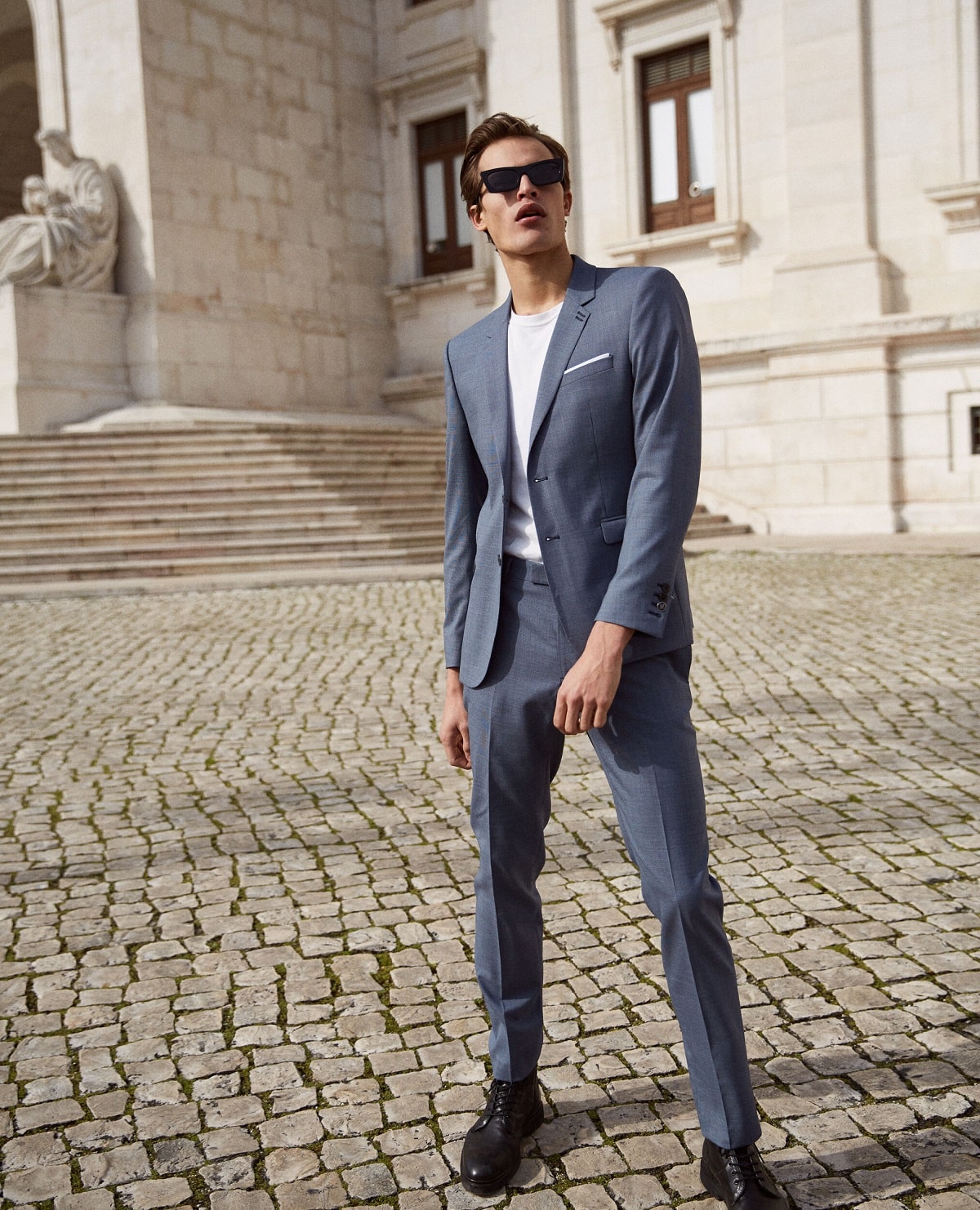
Look for a Simple, Versatile Design
From the early 2000s onward, one silhouette dominated men’s suiting: a slim, single-breasted, two-button two-piece design with notch lapels. Now, though, the tailoring 2.0 trend from a couple of years ago has encouraged more diverse offerings – three pieces, double-breasted jackets, wider cuts, peak lapels, stronger shoulders, and more defined waists. Despite this variety, you’re advised to keep your suit somewhat classic and adaptable:
- Continue to stick with a two-button jacket featuring notch lapels and a structured, although not extreme, silhouette.
- Placement is everything: Avoid a lapel that’s cut too high, and make sure your shirt cuffs don’t disappear into the sleeve.
- For trousers, wide legs and pleated options have a more commanding presence right now but come off as both too youthful and a tad retro. Look for a straight to slightly tapered leg with a flat front that hits right where your dress shoes begin.
- For more nitty-gritty aspects, look for a suit jacket featuring a double vent, considered more formal than single- and no-vent styles.
- Avoid novelty features at this stage – for example, three-plus buttons, peak lapels, patch pockets, and strong, angular, or padded shoulders.
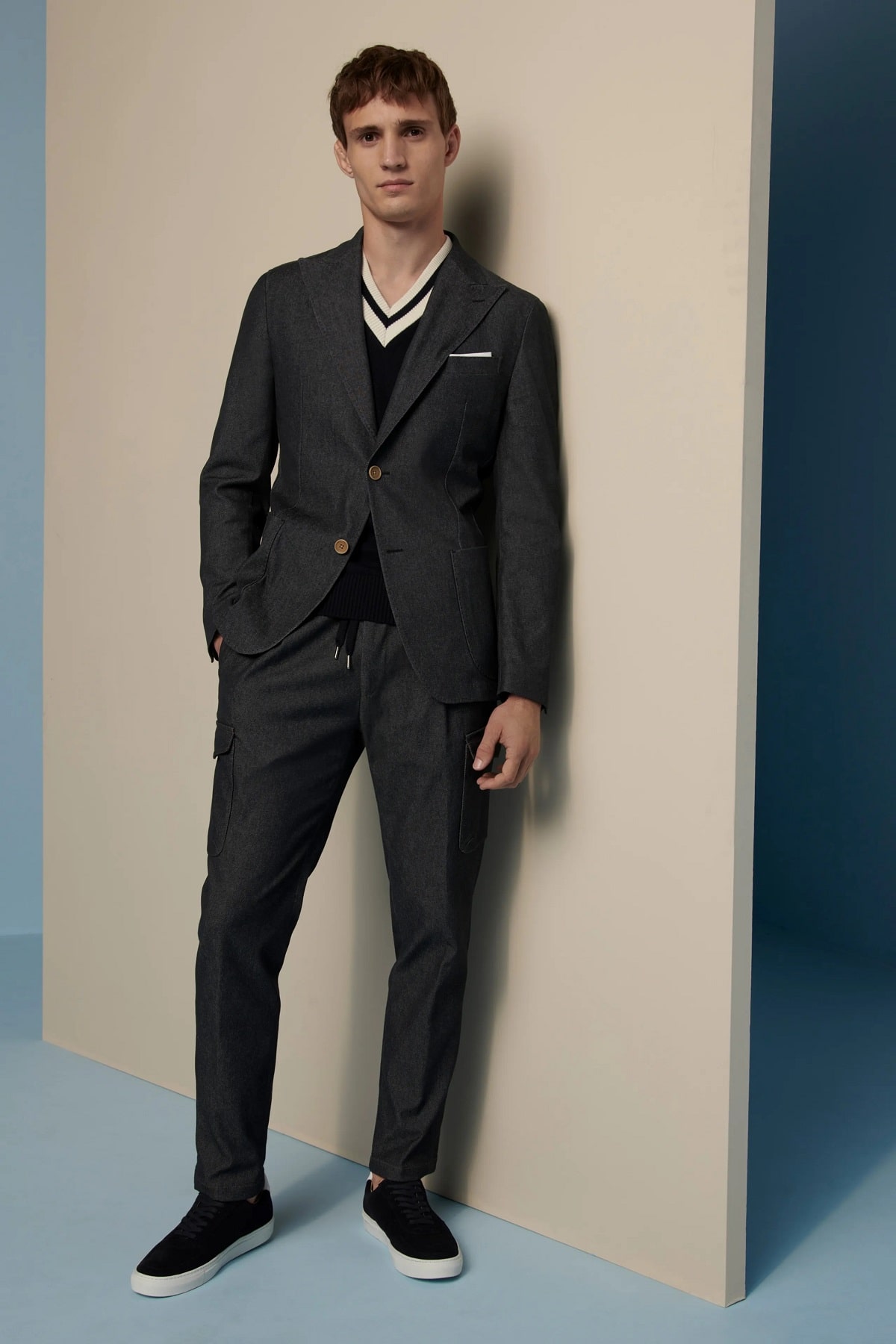
Focus on the Fit
No matter where or how you purchase your suit, fit defines the line between being put together, sloppy, and a try-hard, reflecting precision and effortlessness simultaneously. In most cases, a more personalized fit means getting a tailor involved for varying degrees of adjustments. To make this process go smoothly:
- Never select a suit that’s too tight for your frame. Instead, go slightly larger (no more than an inch) and expect to have your trousers and jacket taken in.
- On the subject of a too-tight fit, avoid straining. This includes at the front and seat of your trousers – the fabric will look stretched. The jacket, meanwhile, should easily button in front, with a small amount of room.
- Even if you start off-the-rack, examine the shoulder: Avoid a bumpy or lumpy appearance or a dent where the shoulder transitions to the sleeve. Instead, these portions should seamlessly lead into the other, with just a slight angle where your shoulder falls.
- For the jacket, make sure it doesn’t fall past your hand – hitting around your thumb is ideal – and fully covers but doesn’t extend past your backside. Sleeves should hit right at your wrists. Realize that adjustments for jackets are selective.
- For the trousers, look for a mid-rise waist that hits right above the hips and doesn’t cause material around the back and front to bunch up or strain. Make sure that the hem hits your shoes and creates a slight break when you sit down.
- Ideally, expect to have the waist and hem of your trousers brought in a touch, and the jacket’s collar and sleeves moderately adjusted.
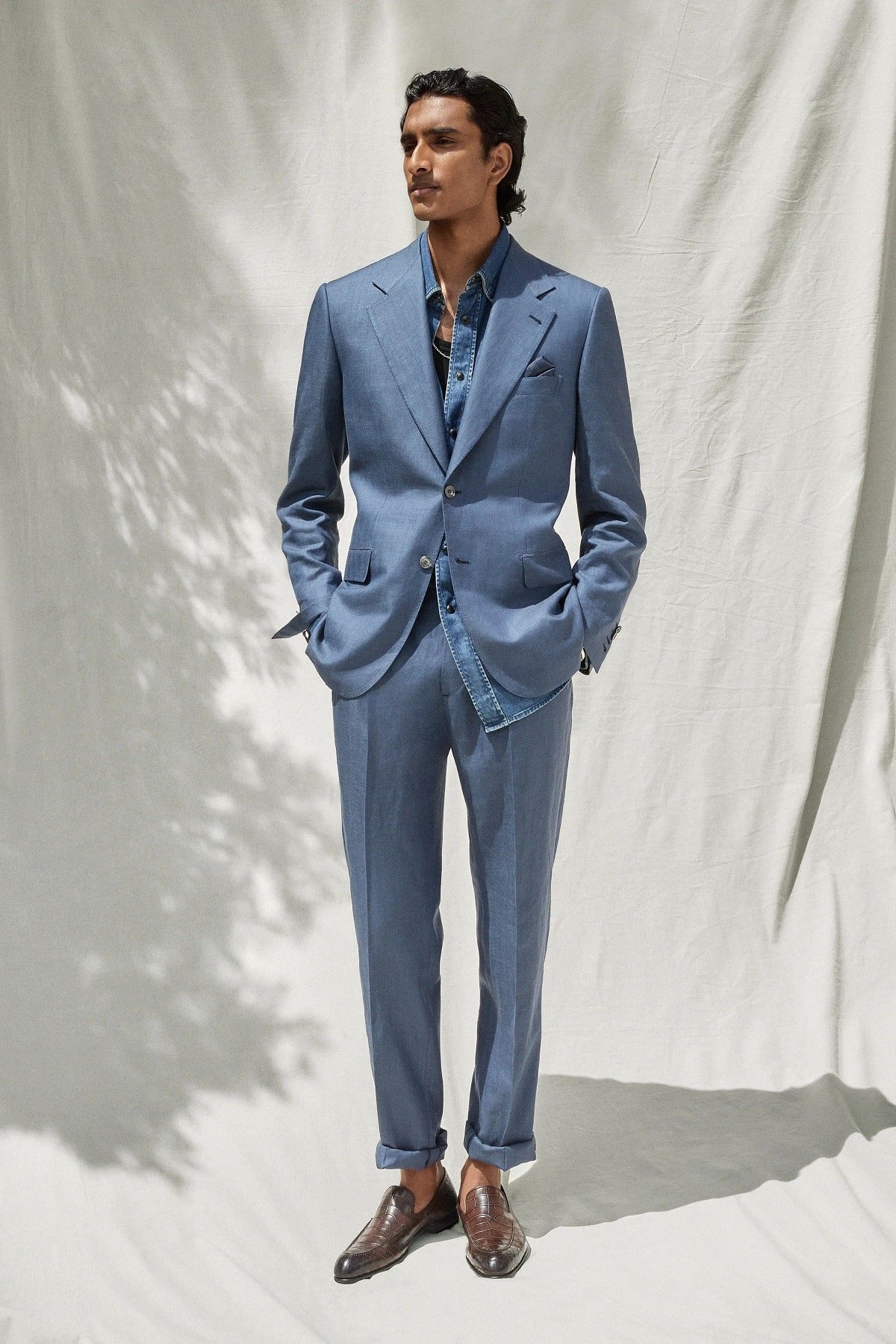
Where and How to Look for a Suit
Consider starting your search for your first suit in person, unless you’re using an online-based made-to-measure suiting service where someone will take your measurements and discuss fits. Generally, never go with the first suit you see. Instead:
- Start with a budget – anywhere from a couple hundred to a couple thousand – and look at retailers within your range. Generally, the more bespoke something is, the higher it will cost. Typically, off-the-rack represents the lower end, made-to-measure fills out the midrange and also limits adjustments, and bespoke, or entirely custom, comes with the highest price tag. Avoid aspirational shopping at this stage, unless it’s in your budget.
- Try on suits from different retailers to see what fits.
- Look for suits that you can easily wear as separates.
- Prepare to take your suit to a tailor to have some adjustments made. Consider getting some quotes to see how this service fits into your overall budget.

Trending
2
3
4
5
6
7
8
9
10










